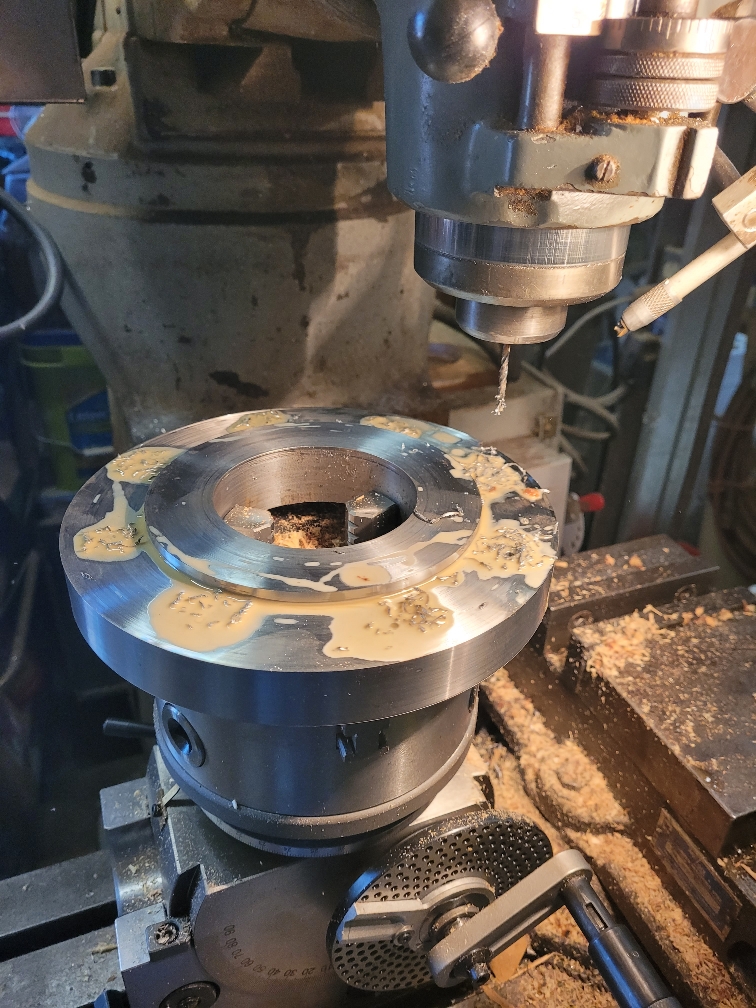Had a similar project several years ago, I think I know what you’re asking. While it was set up in the lathe (I knew the diameter of the bolt pattern of the clutch) so scribed it. Fortunately it was a symmetrical bolt pattern, so I used the diameter as the hypotenuse (45,45,90 triangle) calculated the length of the 2 equal sides and set a protractor. A quick leap frog around the perimeter confirmed the setting was correct ( ended on the starting point), so scripted/punched them in went to drilling/ tapping.
Last edited:

 Get yourself a Hartford Super Spacer if you ever see one around . Makes quick work of those jobs .
Get yourself a Hartford Super Spacer if you ever see one around . Makes quick work of those jobs .




